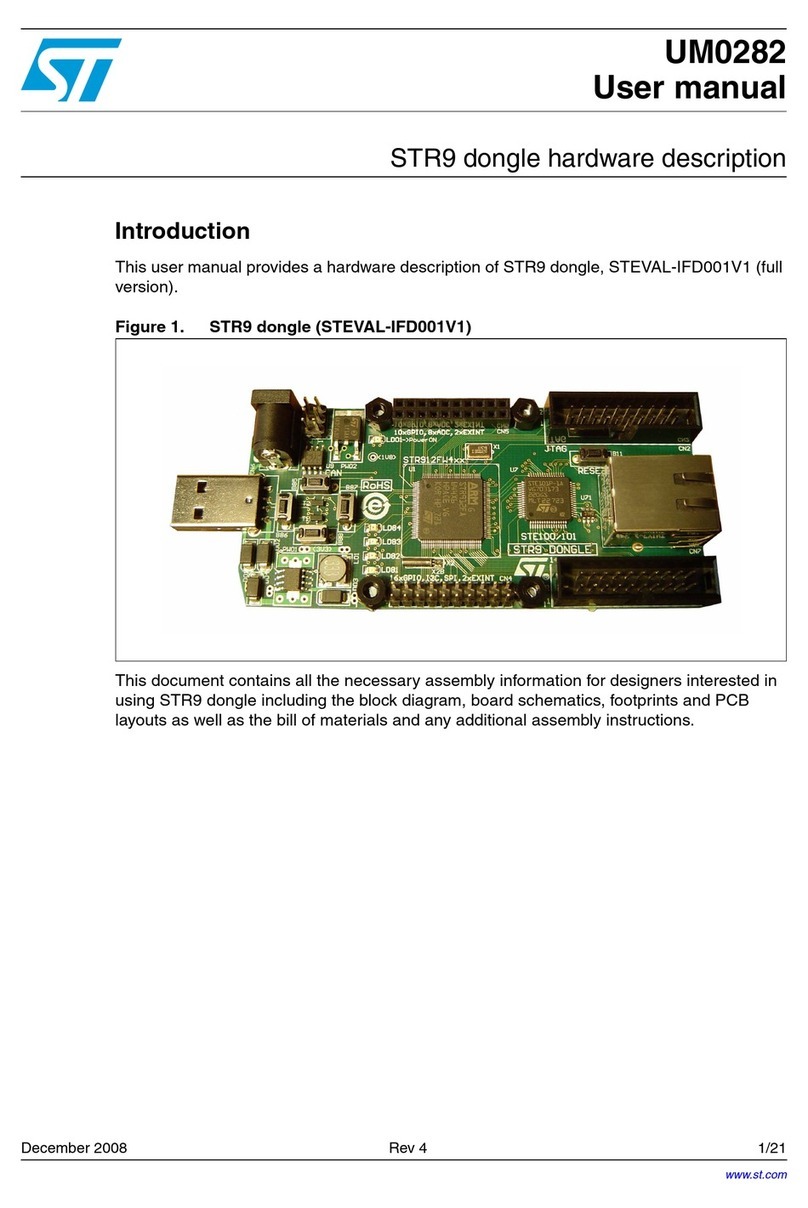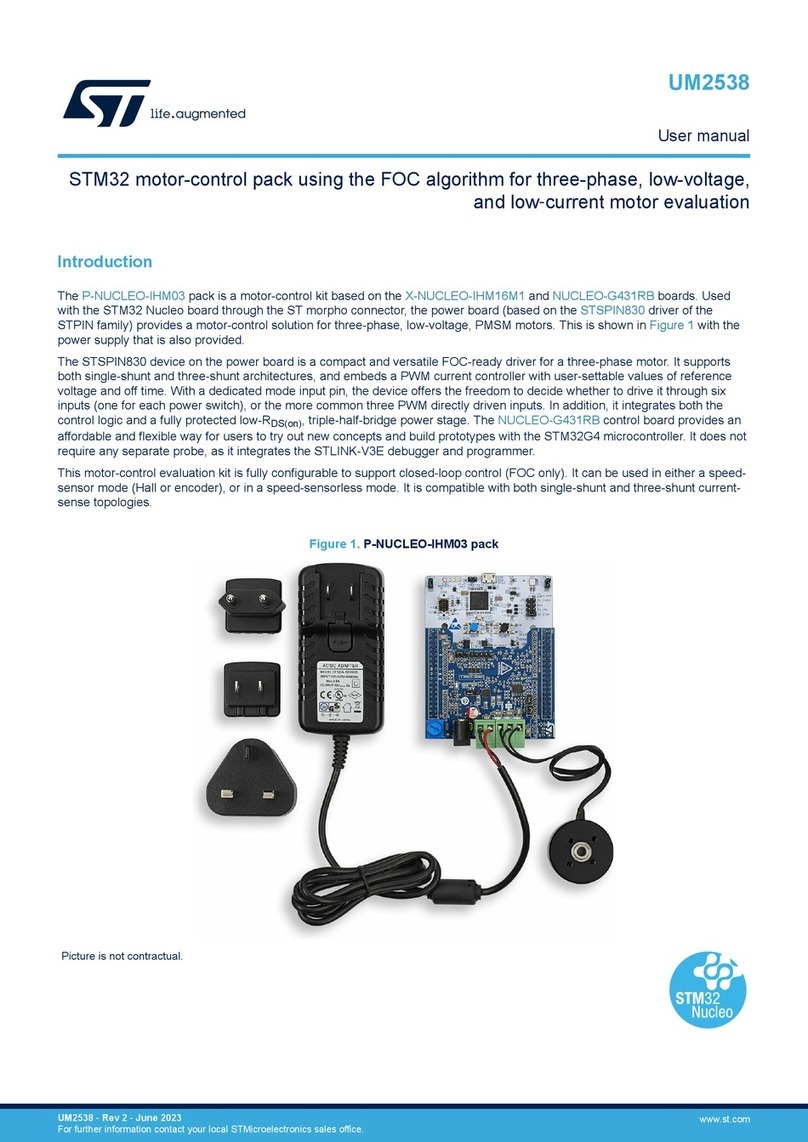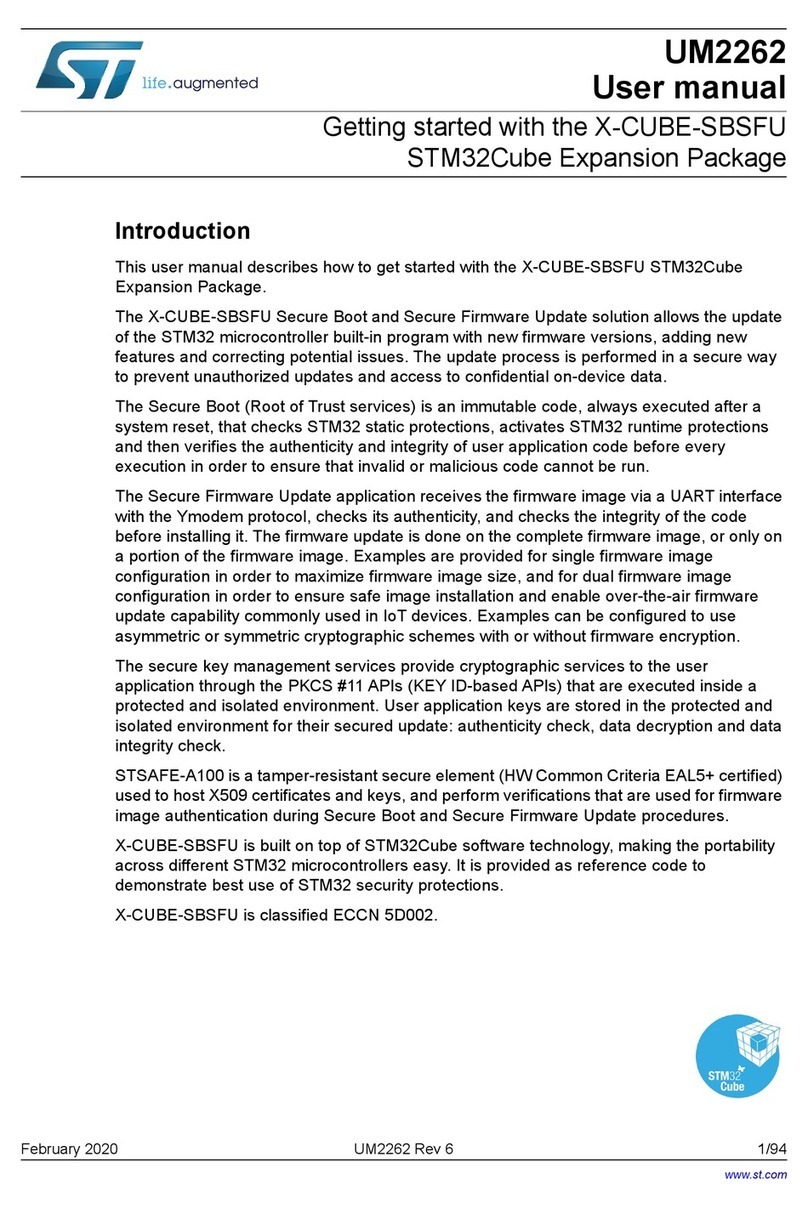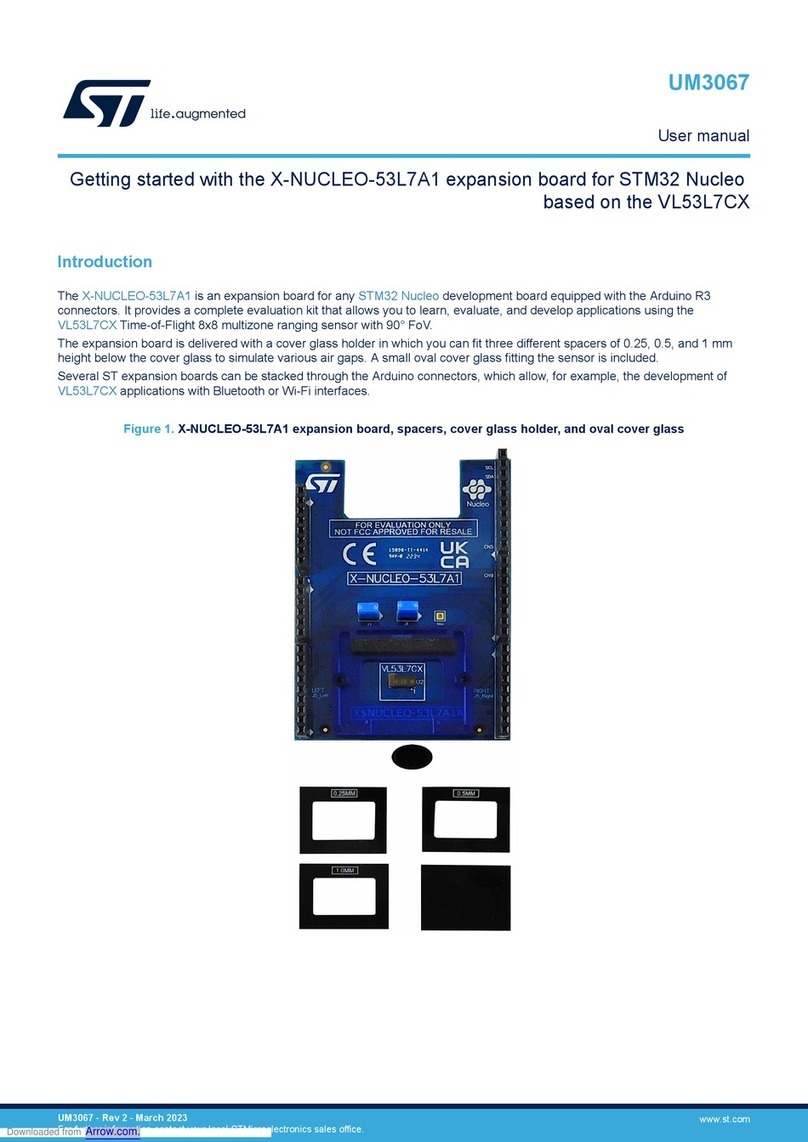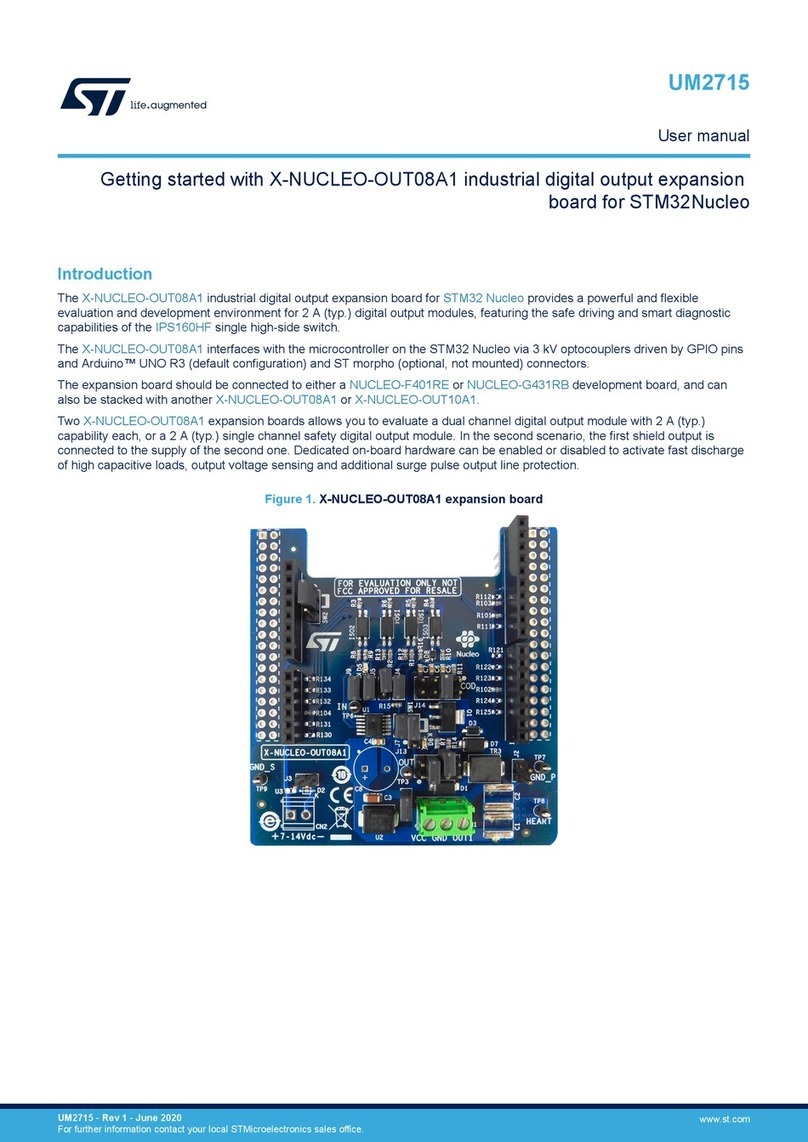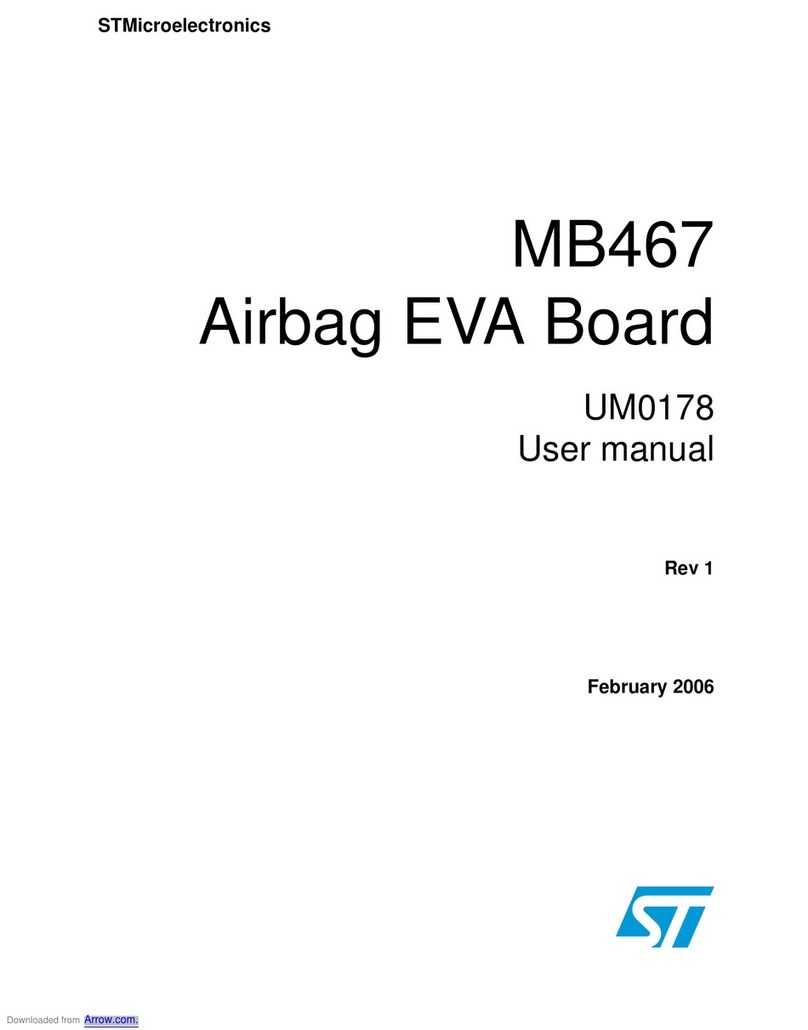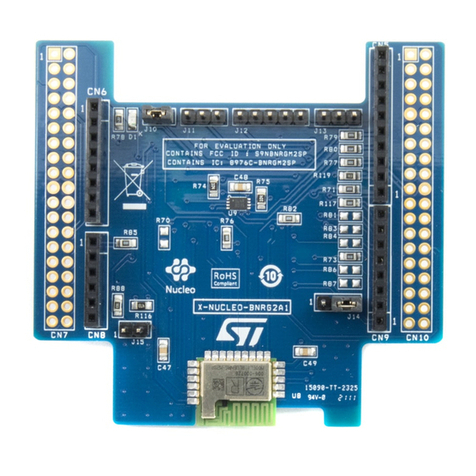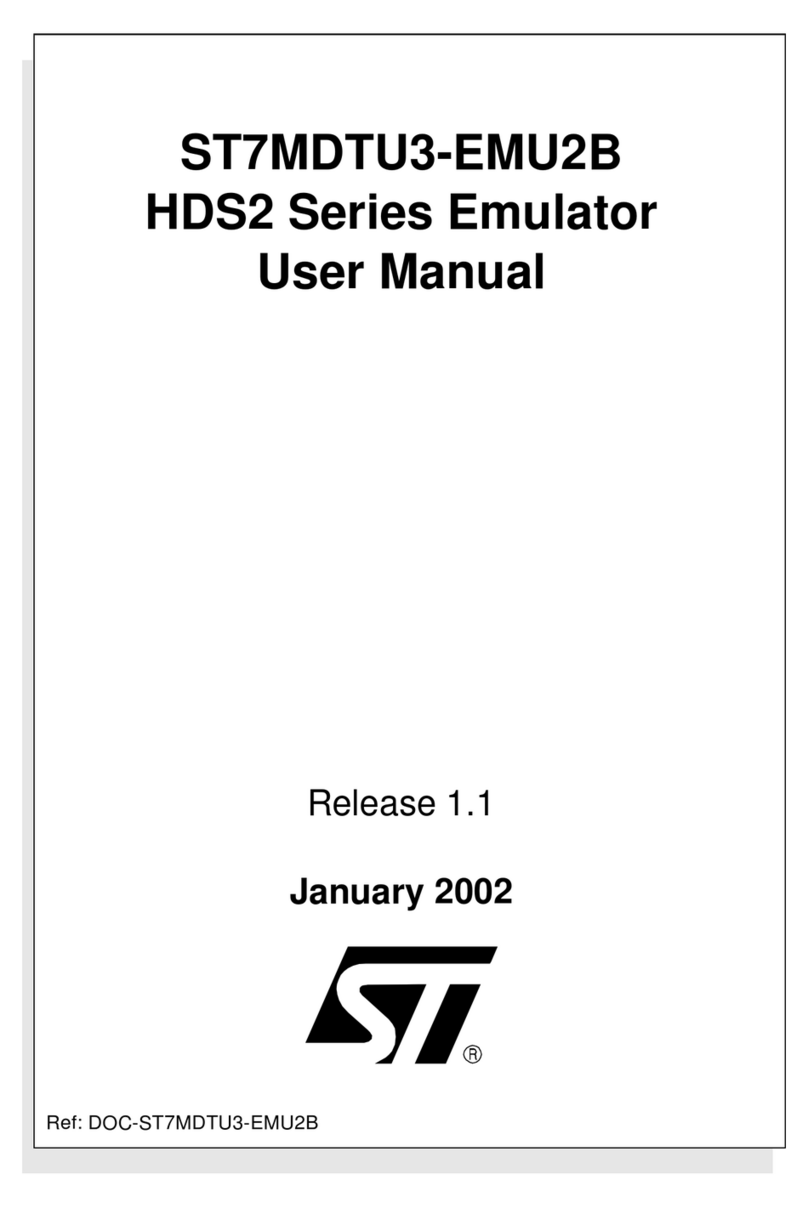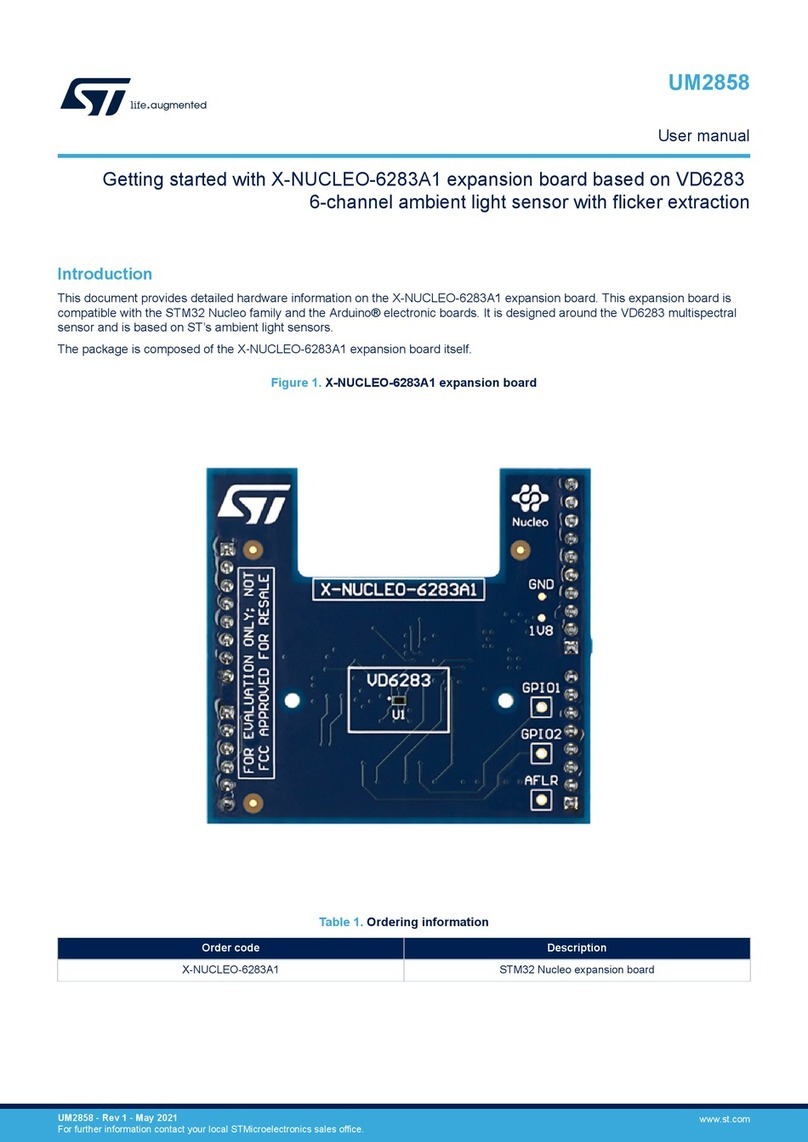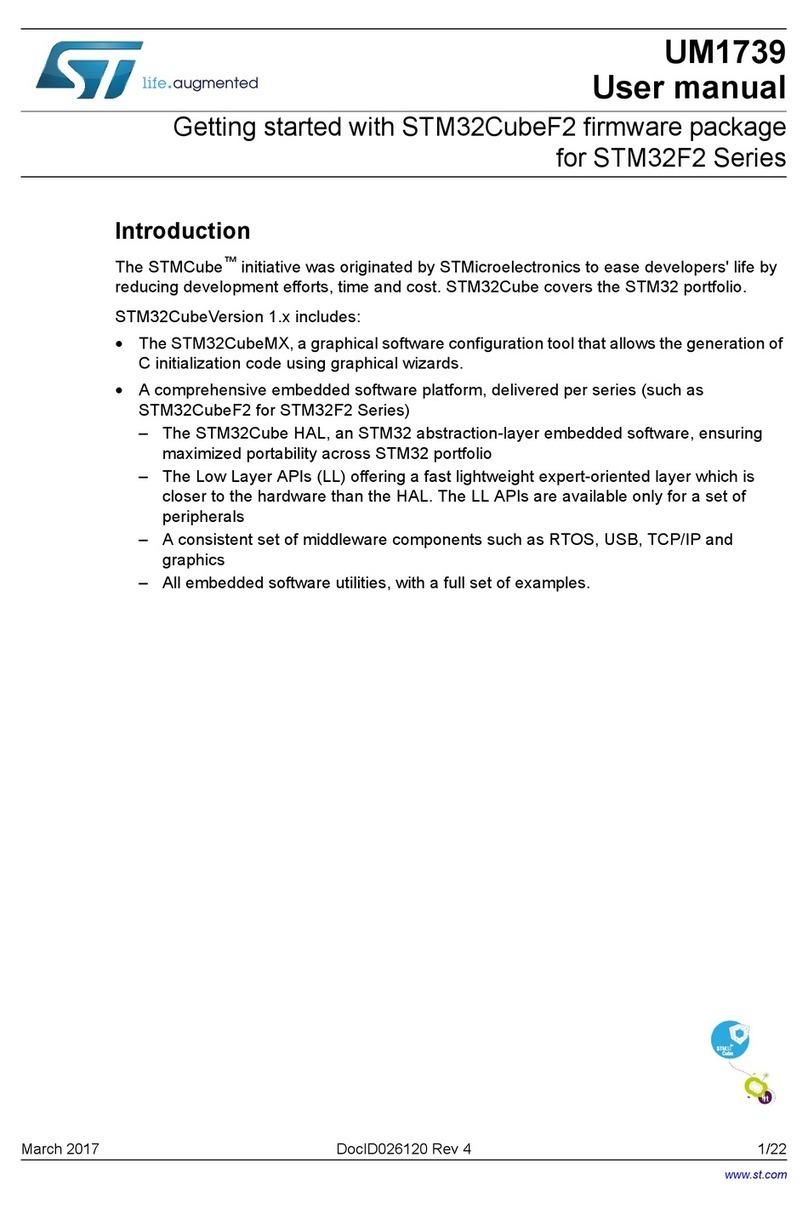ST I-CUBE-LRWAN User manual
Other ST Computer Hardware manuals
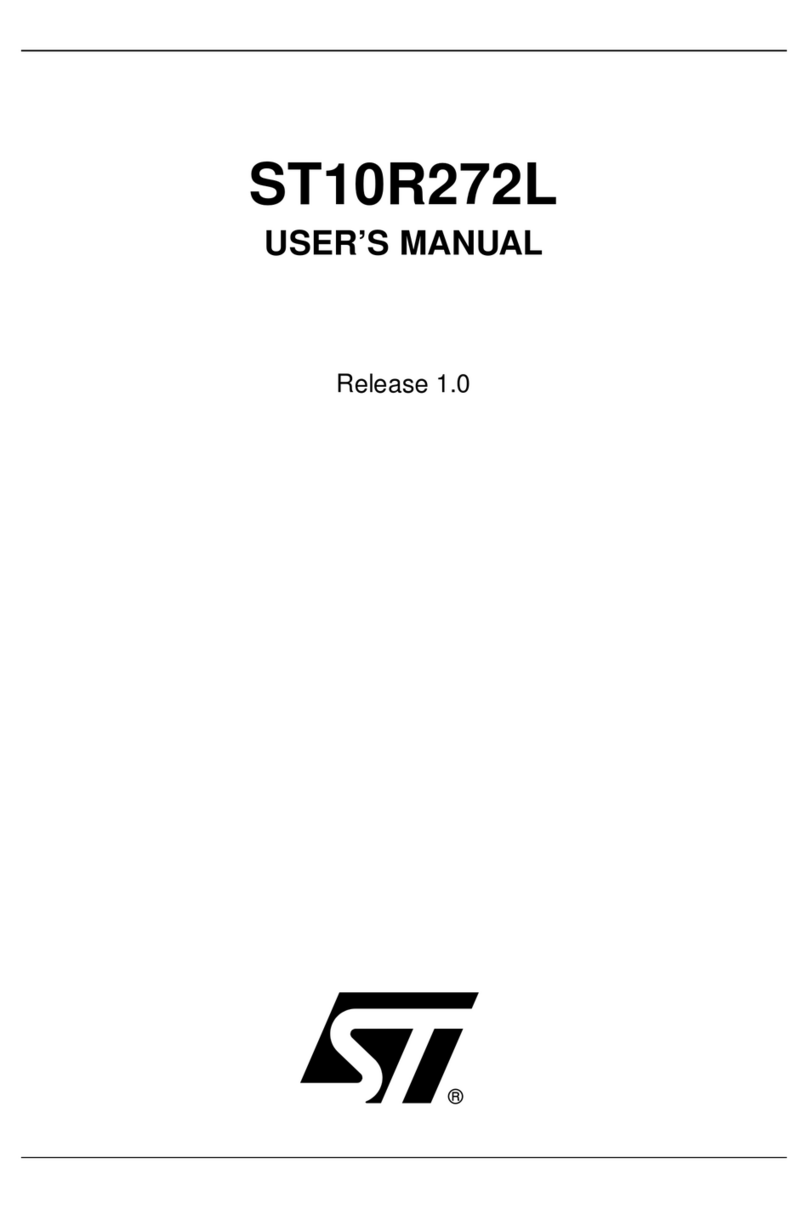
ST
ST ST10R272L User manual
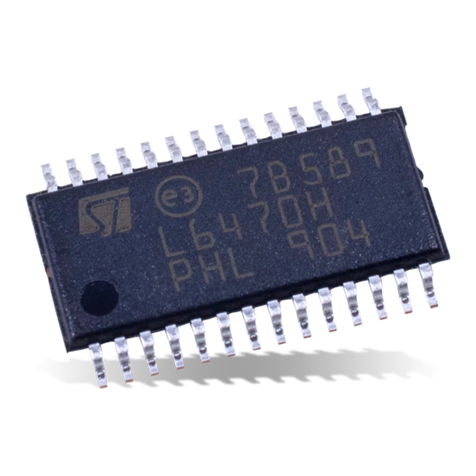
ST
ST L6470H User manual
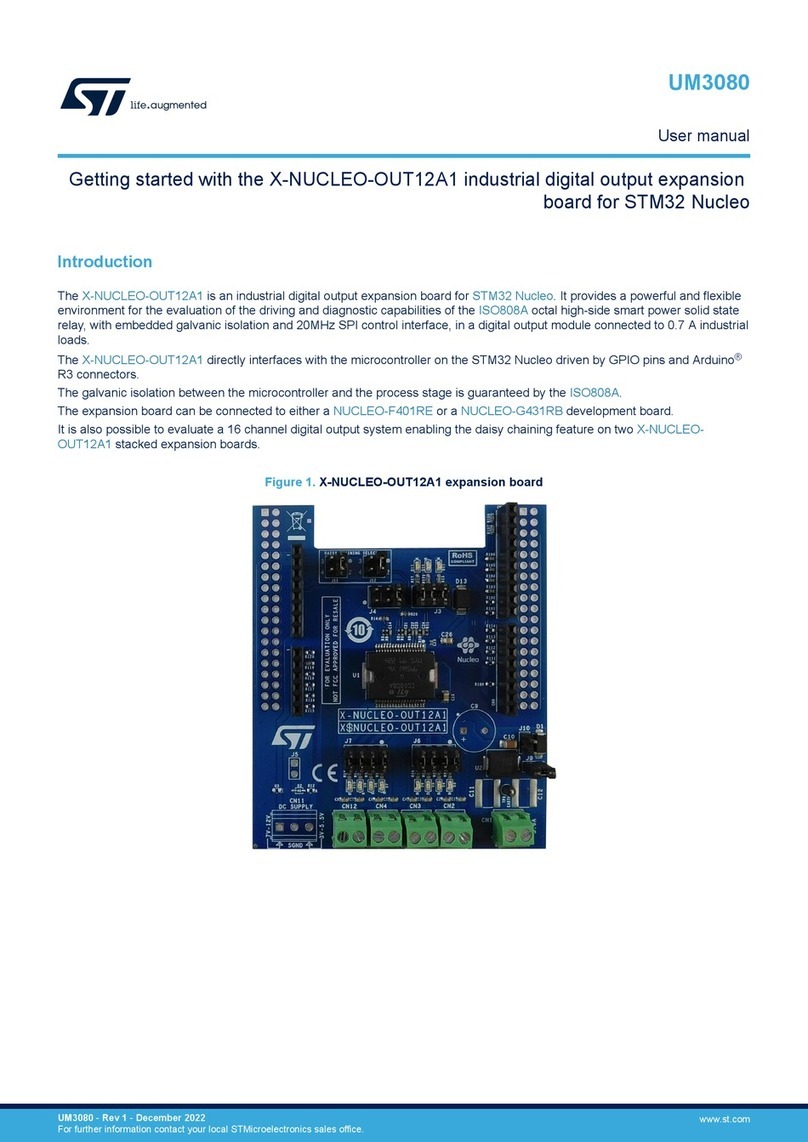
ST
ST X-NUCLEO-OUT12A1 User manual

ST
ST X-NUCLEO-IHM12A1 User manual
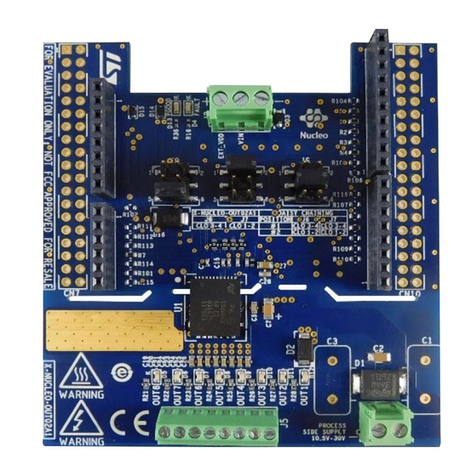
ST
ST X-NUCLEO-OUT02A1 User manual

ST
ST X-NUCLEO-OUT02A1 User manual
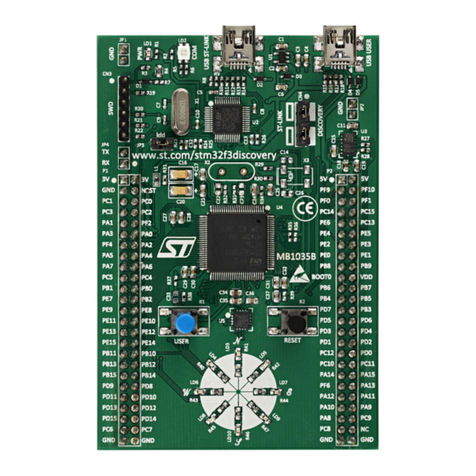
ST
ST STM32F3DISCOVERY User manual
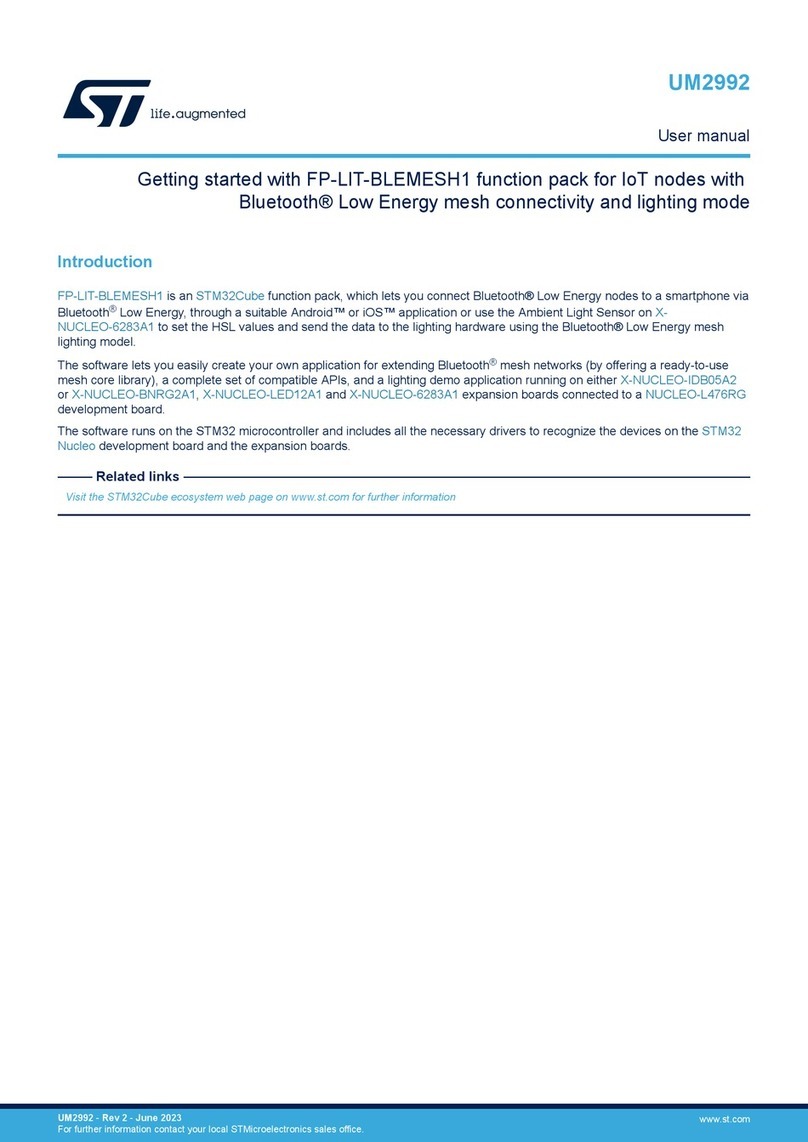
ST
ST FP-LIT-BLEMESH1 User manual
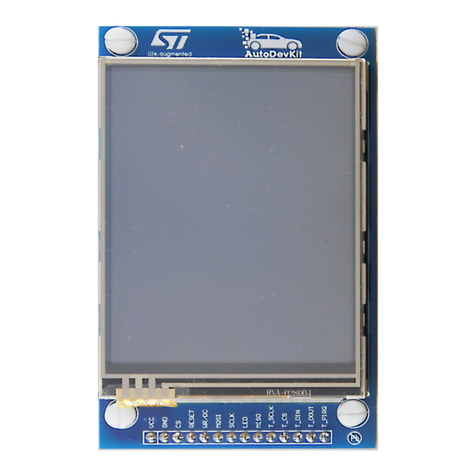
ST
ST AEK-LCD-DT028V1 User manual
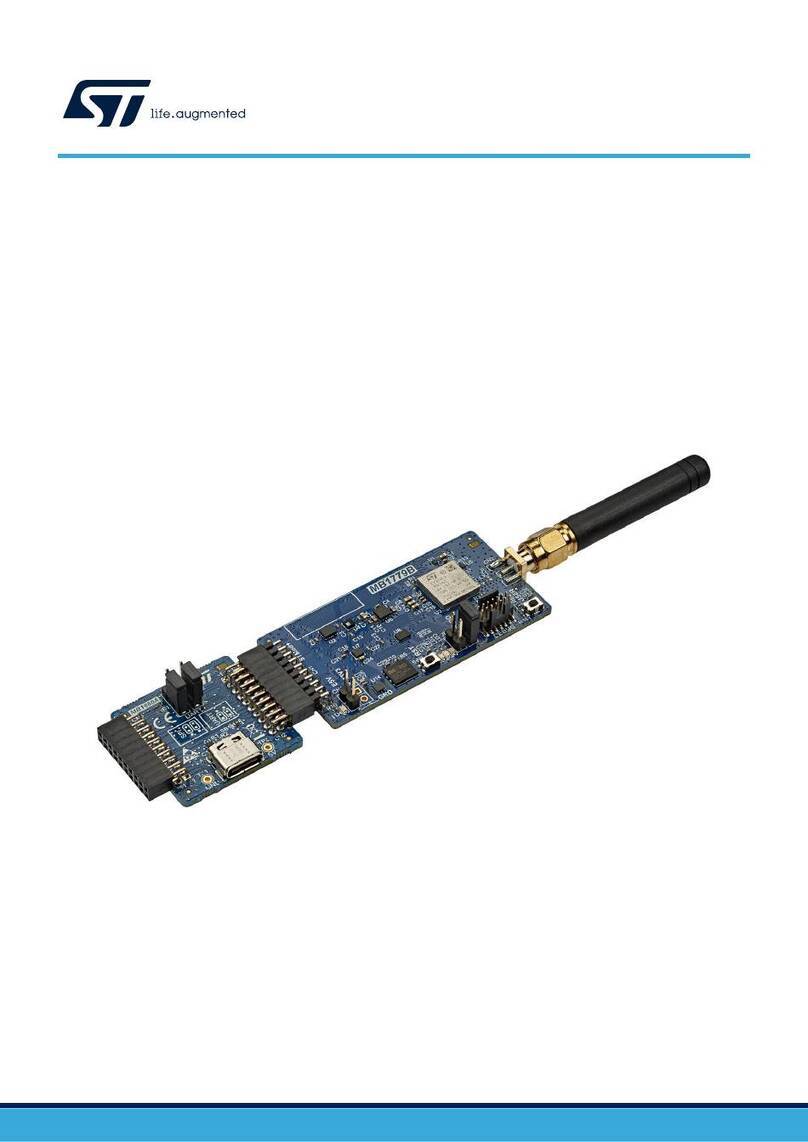
ST
ST STM32WL Series User manual
Popular Computer Hardware manuals by other brands

EMC2
EMC2 VNX Series Hardware Information Guide

Panasonic
Panasonic DV0PM20105 Operation manual

Mitsubishi Electric
Mitsubishi Electric Q81BD-J61BT11 user manual

Gigabyte
Gigabyte B660M DS3H AX DDR4 user manual

Raidon
Raidon iT2300 Quick installation guide

National Instruments
National Instruments PXI-8186 user manual

Intel
Intel AXXRMFBU4 Quick installation user's guide

Kontron
Kontron DIMM-PC/MD product manual

STEINWAY LYNGDORF
STEINWAY LYNGDORF SP-1 installation manual

Advantech
Advantech ASMB-935 Series user manual

Jupiter
Jupiter RAM PACK instructions
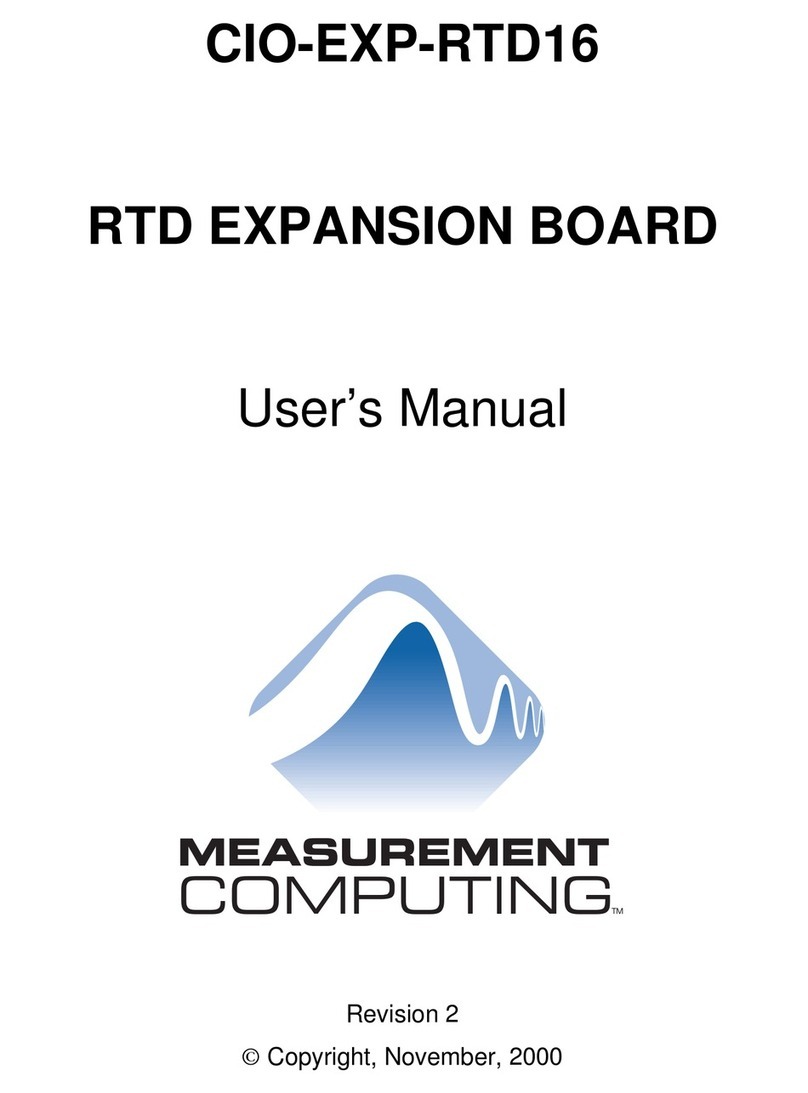
Measurement Computing
Measurement Computing CIO-EXP-RTD16 user manual
